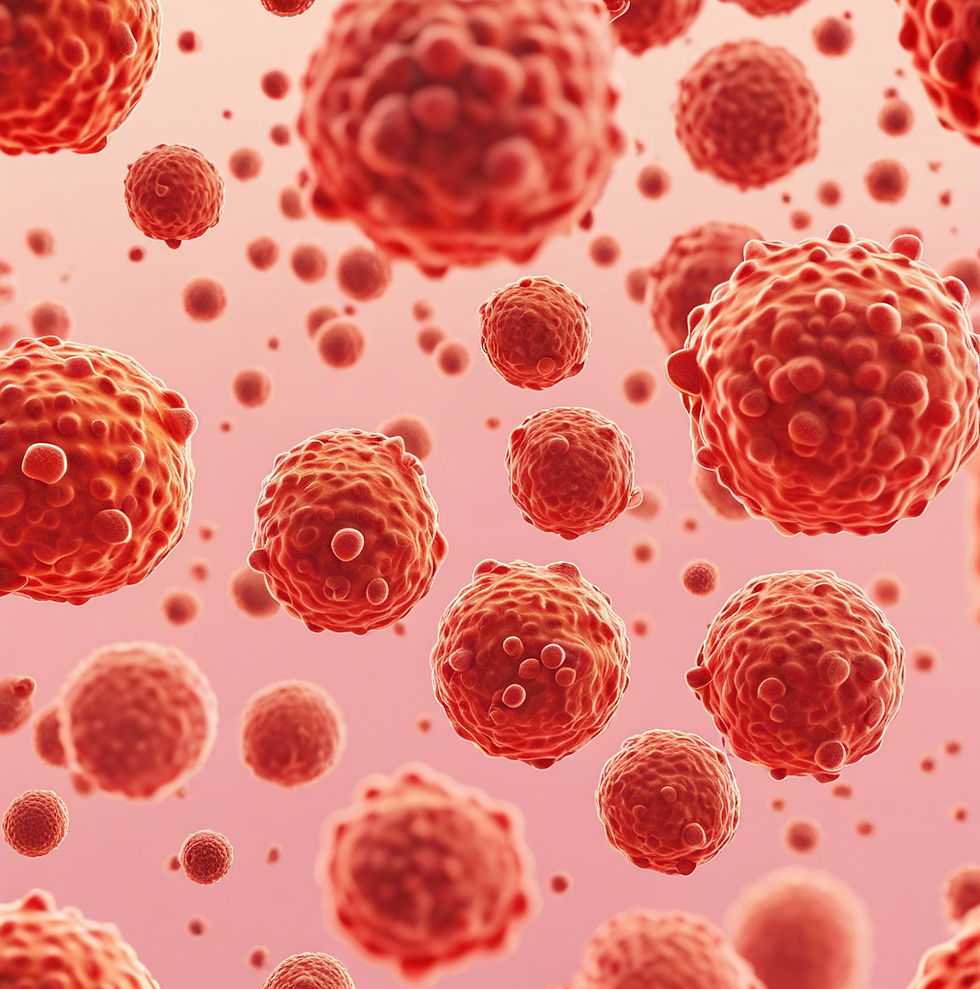On the Origins of Metastasis
- Michelle Howard
- Jun 19, 2024
- 2 min read

Authors:
Thomas N. SeyfriedPurna MukherjeeMehmet S. IyikesiciAbdul SlocumMiriam KalamianJean-Pierre SpinosaChristos Chinopoulos
The Mechanisms By Which Cancer Spreads
Pursuant to having in our possession whylooking at breast cancer (or any cancer, for that matter) through the lens of metastasis, rather than just looking at it through the lens of solid tumors, is beneficial for instructing the use of diagnostics and the selection of therapies, following is a short primer on the basics, excerpted from the linked scientific study:
"Metastasis involves the dissemination of cancer cells from the primary tumor to surrounding tissues and to distant organs and is the primary cause of cancer morbidity and mortality. Most tumors that fail to show local invasion or metastasis are considered benign and do not pose serious risk despite expressing a majority of the so called “Hallmarks of Cancer. Tumor cell metastasis involves a stereotypic cascade of biological phenomenon including local invasion, intravasation into the blood, survival in the circulation, immune suppression, extravasation from the blood, and growth in a distant organ or tissue. Identification of the unique features of the metastatic cell can expand understanding of metastasis and facilitate rational therapeutic strategies based on knowledge of cell biology and biochemistry.
Two major theories have been advanced to explain metastasis that include the epithelial-mesenchymal transition (EMT), and the macrophage fusion hybrid hypothesis. The EMT is the dominant explanation and is based on the somatic mutation theory of cancer. The EMT proposes that an initial series of random mutations disturb cell-cell interaction causing a normal epithelial cell to transform into an invasive mesenchymal cell.
Further additional random mutations cause the mesenchymal cell to intravasate, and subsequently extravasate into the parenchyma at some distant organ site. Once established at the distant site, the metastatic tumor cells transform back to an epithelial phenotype via the so called mesenchymal epithelial transition. No explanation has been presented, however, as to how the multiple random gene mutations responsible for the initial events of the metastatic cascade could be reversed or suppressed during the MET. Despite its linkage to phenomenology, the EMT is considered the dominant explanation for breast cancer metastasis.
In contrast to the EMT, the macrophage fusion hybrid hypothesis posits that metastasis arises from macrophages either directly or indirectly from the fusion of macrophages with neoplastic cells. The metastatic breast cancer cell, like many metastatic cancer cells, expresses characteristics of myeloid cells and macrophages.
These characteristics include phagocytosis, fusogenicity, and expression of multiple myeloid/macrophage biomarkers. Fusion hybridization could also better account for the large degree of cellular and genetic heterogeneity seen in metastatic breast cancer than can the EMT. A macrophage origin of metastasis is also more consistent with Paget’s “seed soil” hypothesis than is an origin based on EMT.
Macrophages (seeds) are known to infiltrate organs (soil) nonrandomly. As glutamine is a major fuel for macrophages, targeting the availability of glutamine together with glucose becomes a rational, yet largely overlooked, therapeutic strategy for managing metastatic cancer."

Comments